Social media has come a long way, from Friendster, Hi5, and MySpace, to Facebook and X. While web2 native platforms have given us unprecedented benefits, they’ve also brought with them a set of challenges that have resulted in some platforms being banned in certain countries, in a bid to protect its people from data breaches, privacy disillusionment and fraud. At the same time, there emerges a status-quo challenger who seeks to dispel the problems inherent to present-day platforms. Powered by decentralization, rooted in democratization, say hello to Web3 Social Media.
At the heart of human existence lies an unquenchable desire for connection. From the earliest days of civilization, people have sought ways to communicate, share experiences, and build relationships. This fundamental need to connect is deeply ingrained in our social fabric, driving us to find and create communities where we can belong, express ourselves, and interact with others. The dawn of the internet provided a new frontier for this timeless human pursuit, offering unprecedented opportunities for connection and communication.
And while we’ve made strides in ensuring that this very human need is met, somewhere along the way, we lost the plot. Social comforts do not outweigh our need for privacy and protection, not to mention the loss of value. But there is a way to take back control while continuing to enjoy the privileges of borderless connections. The answer lies in decentralization and democratization, things that Web2 social media platforms lack. But first, let’s get back to some basics.
Why and how did social media come to be?
The human need for connection
Although many believe it to be a simplistic representation of the motivators of human behaviour, Maslow’s Hierarchy of Needs theory speaks to the inherent need for connection and sharing. These needs are strewn across the pyramid-depiction of his theory and labeled social needs (belonging), esteem needs (validation), and self-actualization (self-expression and learning).
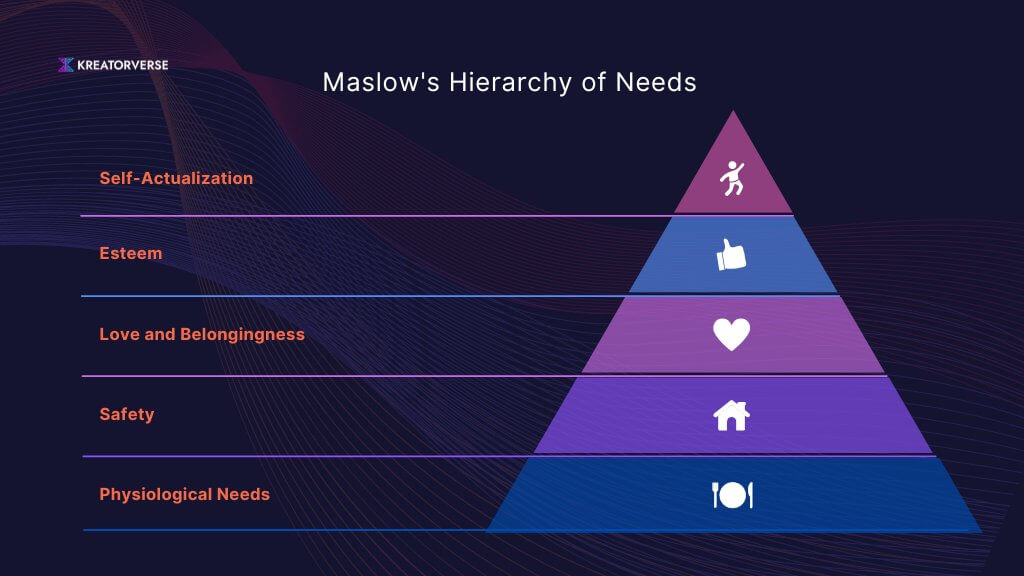
Other behavioural theories, too, echo likewise. The Uses and Gratifications Theory suggests that people actively choose media that satisfy their various needs, such as information, personal identity, integration and social interaction, and entertainment. The Self-Determination Theory highlights the importance of autonomy, competence, and relatedness.
The Internet: A Catalyst for Border-Free Interaction
The late 20th century witnessed the birth of the internet which transformed the way we connect with the world. It broke down geographical barriers, enabling people from different corners of the globe to interact seamlessly. The newfound connectivity brought about a cultural shift, as digital literacy became more widespread and the demand for online communication tools surged. The transition to Web 2.0 technologies further fuelled this transformation by introducing interactive and user-generated content, making the internet a more dynamic and participatory space.
The Emergence of Social Media: Hitting the Sweet Spot
With the backdrop of technological advancements and evolving social needs, social media platforms turned out as the perfect solution to bridge the gap between human connection and digital interaction. Social media, as it is today, often caters to psychological needs by allowing users to control their interactions, develop skills, and connect with others.
The first recognizable social media platform, Six Degrees, launched in 1997, allowed users to create profiles, connect with friends, and share content. It was inspired by the “six degrees of separation” concept, which suggested that everyone in the world is six or fewer social connections away from each other.
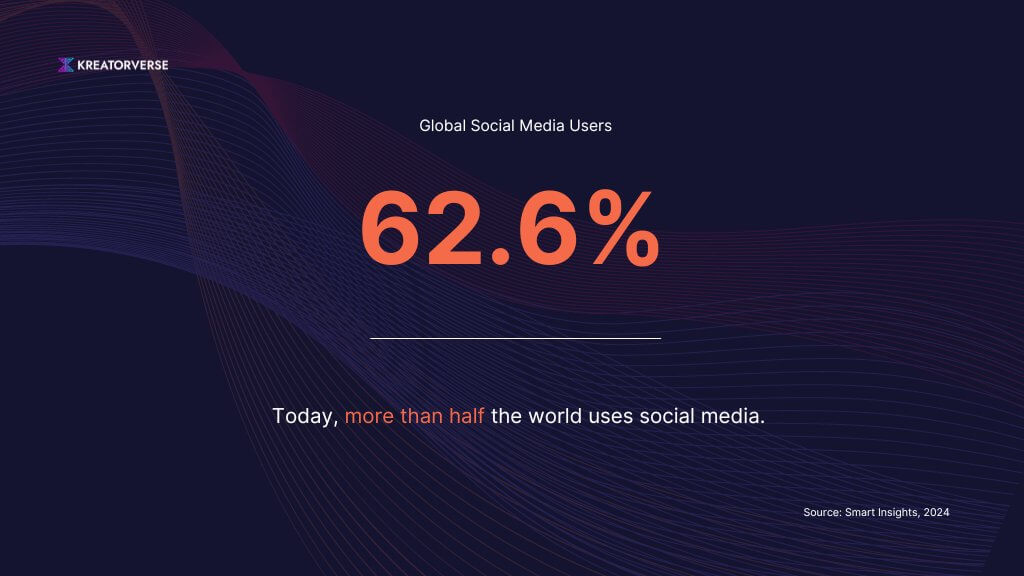
Friendster (2002) and MySpace (2003) capitalized on the growing desire for online interaction. Friendster aimed to help people expand their social circles and meet new friends. MySpace became a hub for self-expression and creativity, particularly popular among musicians and artists.
In 2004, Facebook entered the scene, initially targeting college students before expanding to a global audience. Its focus on real-name identity and authentic connections struck a chord with users, fostering a sense of community and trust. Facebook’s success demonstrated the immense potential of social media to fulfill the deep-seated human need for connection, expression, and validation.
Twitter (X), Instagram, LinkedIn, Snapchat, and TikTok soon followed, each offering unique features and catering to different aspects of social interaction. Collectively, they transformed social media into a near-inseparable part of daily life, where people could share experiences, seek information, entertain themselves, and find validation.
The Dark Side of Web2 Social Media
From being platforms for sharing our thoughts and connecting with others, each social media platform today functions as a podium for self-expression, a soapbox for critical thinking, a marketplace for brands, and an advertising avenue for anyone who wishes to look at them so – businesses, brands, creators.
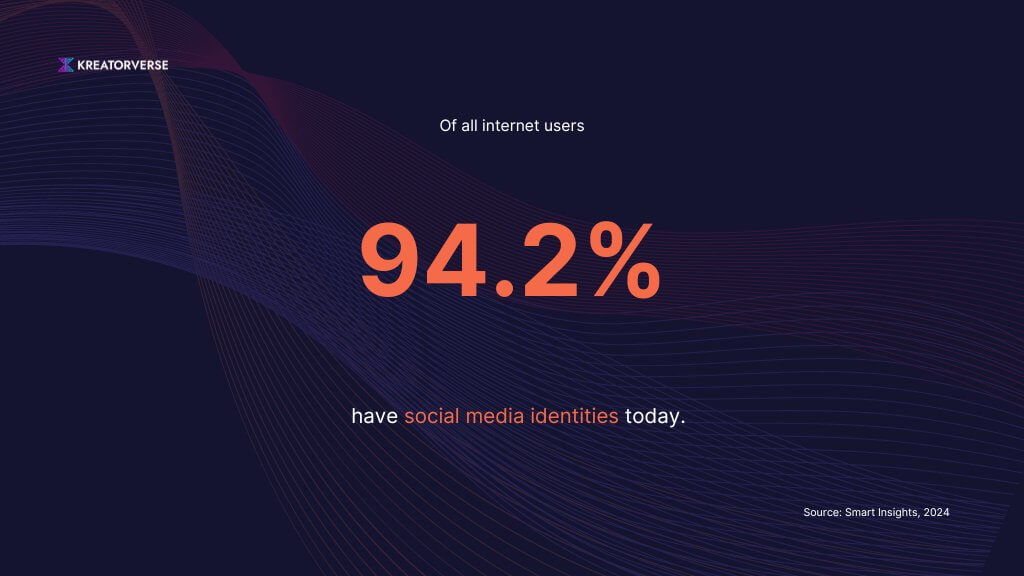
But with such power comes great responsibility, which is often diluted when viewed through the lens of capitalism. Web2 social media platforms are no exception; they are ridden with challenges inherent to the very core of their functioning.
- Data breaches and lack of user control: Let’s talk data privacy—or the lack thereof. Web2 platforms harvest and monetize data without asking nicely first. Remember the Facebook/Cambridge Analytica scandal? Data of millions of users’ data was harvested and used for political ads. Consent? Never heard of it.
- Centralized censorship and content moderation issues: Web2 social media platforms often act like the ultimate judge, jury, and executioner on and for content moderation. The rules are opaque and seemingly arbitrary. One day you’re viral, the next you’re ghosted. For instance, decisions on what content to remove or promote can be influenced by external pressures.
- Algorithmic bias and manipulation: Proprietary algorithms are the puppet masters of social media, pulling strings to keep you engaged, and sometimes even enraged. They create echo chambers, push divisive content, and manipulate your behaviour—all in the name of clicks and views. The result is akin to a funhouse mirror that distorts reality, going as far as swaying public opinion and election outcomes.
- Security vulnerabilities: Centralized data storage makes these platforms prime targets for cyberattacks. Take Twitter’s 2022 data breach, for instance. Millions of users had their private information exposed, proving that these platforms might not be as secure as they claim.
- Monetization and revenue distribution issues: If you’re a content creator, brace yourself. On Web2 platforms, you’re often left with the crumbs while the platform gobbles up the lion’s share of revenue. Despite generating the content that keeps these platforms buzzing, creators get a raw deal, highlighting the need for more equitable revenue distribution models.
- Impact on mental health and well-being: The constant barrage of curated perfection, cyberbullying, and the relentless chase for likes can wreak havoc on self-esteem and well-being. Social media addiction is real, and the effects—especially on younger users—are anything but trivial.
The Current State of Web2 Social Media Platforms
Platforms like Facebook, Twitter, Instagram, and TikTok have made efforts to address the issues mentioned above – algorithm changes, new data privacy policies, and attempts at transparent content moderation. But let’s be honest, these efforts often feel like putting a Band-Aid on a bullet wound. Public trust is waning, and users are clamouring for a platform that truly prioritizes their needs.
It’s clear – we need a better solution.
Decentralized Social Media (DeSoc) – Ushering an era of user control and transparency
Web3, the next generation of the internet, uses blockchain technology to create a more decentralized, transparent, and user-controlled online experience. Instead of relying on big companies to manage data and services, Web3 allows individuals to own and control their data and digital interactions.
What is Web3 social media?
Web3 social media platforms or DeSoc are online spaces where users have more control over their data and content. Blockchain-based and carrying the foundational principles of that technology, they allow users to earn directly from their contributions and interactions without relying on traditional centralized companies.
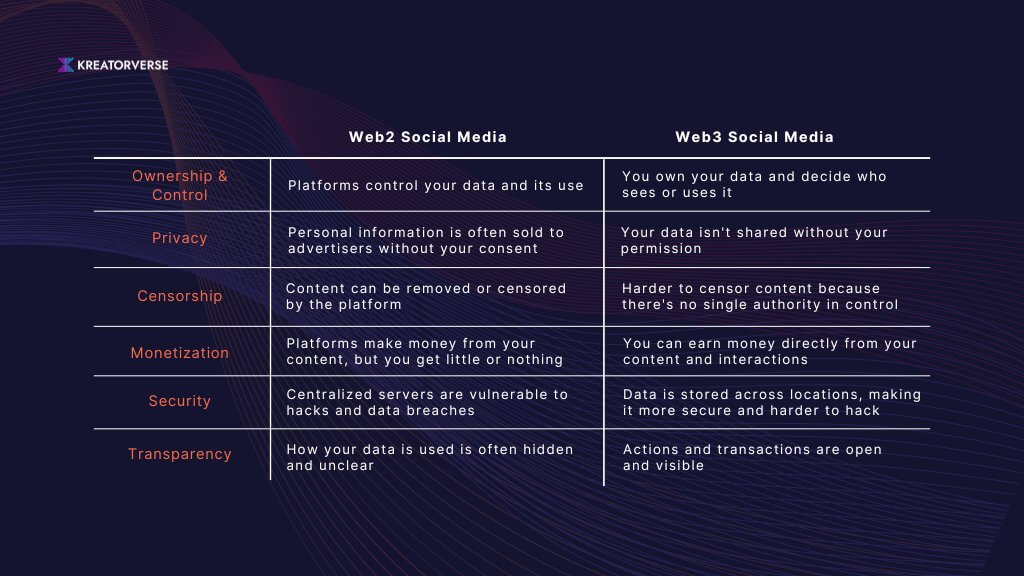
How does Web3 Social media work?
Web3 social media platforms operate differently from traditional social media. DeSoc is built on decentralized networks. Data and content are distributed across multiple computers (nodes) instead of being stored on central servers controlled by a company. This decentralized structure ensures that no single entity has control over everything, providing more security and user control.
User Ownership and Control
In this social media, users create accounts using a decentralized identity (DID), often linked to a blockchain wallet. This setup allows users to own their data and content, empowering them to decide who can see their posts and what data they share. DIDs ensure that your digital identity is secure, private, and portable across various platforms.
Blockchain, Smart Contracts, NFTs
These technologies ensure that actions and transactions are transparent, secure, and tamper-proof.
- Blockchain: A digital ledger that records transactions transparently and securely.
- Smart Contracts: Automated agreements that execute actions (like payments) when certain conditions are met, without requiring intermediaries.
- NFTs (Non-Fungible Tokens): Unique digital assets that represent ownership of specific content or items on the blockchain. Users can mint their posts, images, and other digital content as NFTs, giving them true ownership and the ability to monetize their creations.
Earning and Rewards
One of the key features of DeSoc is the ability to earn tokens or cryptocurrency for your activity on the platform. Users can earn tokens for posting content, receiving likes, or sharing posts. These tokens can be traded, spent within the platform, or converted to traditional currency. Additionally, by minting their content as NFTs, users can directly sell or trade their digital assets, creating new monetization opportunities.
Privacy and Security
Web3 social media platforms enhance privacy and security by encrypting data and distributing it across the network. This makes it harder for hackers to access your information and gives you more control over your personal data and privacy settings. With DIDs, you can manage which parts of your identity are visible to others.
Transparency
All actions and transactions on the platform are recorded on the blockchain, making them transparent and tamper-proof. This transparency builds trust and reduces the risk of fraud or manipulation.
Community Governance
DeSoc often includes community governance features, allowing users to participate in decision-making processes through voting mechanisms powered by tokens. This democratic approach ensures that platform changes reflect the community’s desires.
Here’s an example of Web3 Social Media in Action
Imagine you join a Web3 social media platform like Steemit:
- Sign Up: You create an account linked to a decentralized identity (DID) and a blockchain wallet.
- Post Content: You write an article, perhaps even mint it as an NFT, and publish it on the platform.
- Earn Tokens: Your article gets likes and shares, earning you tokens.
- Control Data: You decide who can see your post and what data you share.
- Spend or Trade Tokens: You can use the earned tokens within the platform, trade them for other cryptocurrencies, convert them to cash, or sell your NFT content.
- Participate in Governance: You use tokens to vote on platform changes or new features.
By decentralizing control, enhancing privacy, and providing new earning opportunities, these platforms offer a user-centric alternative to traditional social media.
The State of DeSoc Today
The Numbers Speak
Global revenues from decentralized social networks were projected to reach $12,132.2 million by 2023. By 2033, this market is expected to exceed $101,200.8 million.
Over the next ten years, the demand for global decentralized social networks is anticipated to grow at an annual rate of 23.6%.
The Web3 social applications (dApps) sector saw an exceptional 29% rise in Unique Active Wallets (UAW) in 2023. This is a 518% increase compared to 2022.
Top Web3 Social Media Platforms
Mastodon: An open-source, decentralized microblogging platform by the founder of Twitter, it allows users to create instances and connect across the Mastodon network. Mastodon has reached over 2.5 million monthly active users.
Diamond App: A decentralized social media platform built on the DeSoc blockchain that aims to provide users with control over their social identities and the ability to monetize their content and influence. Mastodon has reached over 1.3 million monthly active users.
Minds: Minds is a privacy-focused Web3 social network emphasizing user control over data and content. It rewards users with tokens for engagement and participation. Mastodon has over 300k active users monthly.
Lens Protocol: A composable, decentralized social graph on Polygon that gives creators complete control of their content and data. With Lens Protocol, users own their profile, where they want to use it, how they want to use it, and even how they monetize it. Lens has crossed over 59 monthly active users.
Steemit: A pioneer in the Web3 social media landscape, redefining how content creators and consumers interact. Built on the Steem blockchain, Steemit allows users to publish, curate, and reward content decentralized. Steemit has more than 100,000 monthly active users.
Chingari: Chingari is a decentralized video-sharing platform that competes with traditional social media Apps. It allows users to create and discover short videos while controlling their data. Chingari boasts an impressive 40 million monthly active users.
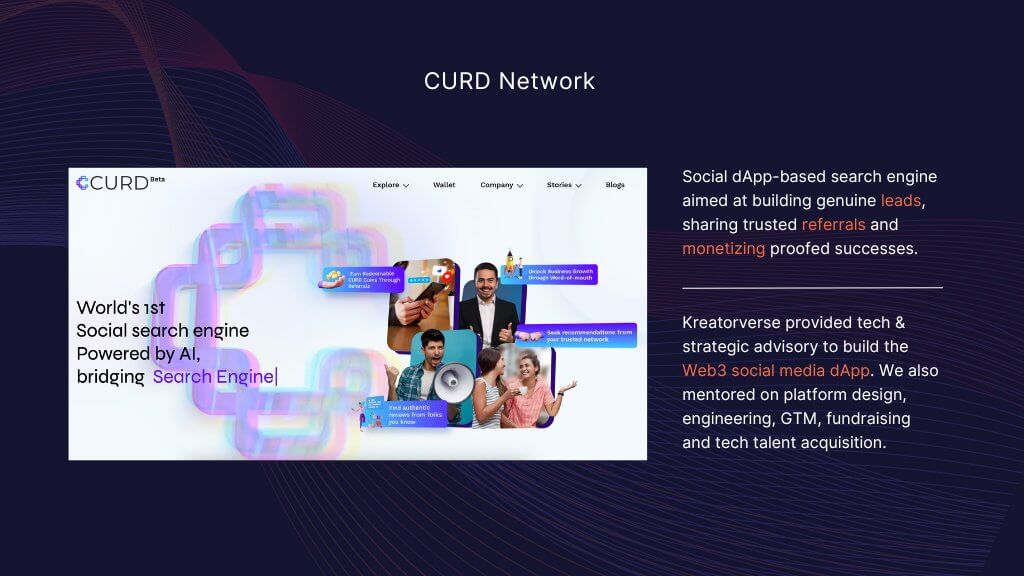
Web2 platforms are embracing Web3 technologies – But why?
Several Web2 social media platforms are integrating Web3 features into their ecosystems. Here’s a look at some of the major players and their motivations:
Twitter (X): X has shown a strong interest in Web3 technologies, particularly with its introduction of Bitcoin tipping and NFT profile pictures. The integration aims to enhance user engagement and explore new revenue streams, while positioning X as a forward-thinking, tech-savvy platform.
Meta (Facebook and Instagram): Meta had wowed the world with its rebrand from Facebook, and had embraced the Metaverse, while also integrating NFTs into Instagram, allowing users to showcase their digital art collections. This move aligned with Meta’s broader vision of creating a more immersive and interconnected virtual world, leveraging blockchain to ensure authenticity and ownership of digital assets. Unfortunately, in 2023, Meta dropped NFT support for Instagram and Facebook, and laid off 10,000 additional employees likely involved in their Web 3 initiative.
Reddit: Reddit has launched its own NFT project, “Reddit Collectible Avatars,” and has been experimenting with cryptocurrency-based community points. These initiatives aim to empower users with ownership and enhance community engagement through decentralized rewards systems.
YouTube: YouTube has expressed interest in integrating Web3 features, such as NFTs, to help creators monetize their content in new ways. This approach is designed to offer creators more revenue opportunities and to keep YouTube competitive in the evolving digital landscape.
TikTok: TikTok has partnered with Nfinity, a social media technology platform, to create and sell digital collectibles. This integration allows TikTok to tap into the booming NFT market, offering users and creators new ways to interact with and profit from the platform.
By incorporating Web3 elements, these Web2 platforms aim to create a more dynamic, user-centric, and profitable ecosystem that leverages the benefits of decentralized technologies.
- Enhanced user engagement: Web3 features like NFTs and cryptocurrency tipping provide new ways for users to interact and engage with content, making the platforms more appealing and interactive.
- New revenue streams: Integrating Web3 technologies opens up new monetization avenues for both the platforms and their users. For example, NFTs can be sold, traded, and used as digital assets, generating additional revenue.
- Staying competitive: As Web3 gains traction, Web2 platforms are keen to stay relevant and competitive by adopting the latest technologies. This helps them retain their user base and attract new users who are interested in the latest digital trends.
- User empowerment and ownership: Web3’s emphasis on decentralization and user ownership aligns with the growing demand for more control over personal data and content. By integrating Web3, platforms can offer users more autonomy and security.
- Future-proofing: As the digital landscape evolves, integrating Web3 features helps traditional social media platforms future-proof their business models, ensuring they remain at the forefront of technological innovation.
Challenges in DeSoc today
While these platforms are blazing a new trail in the digital landscape, it’s not all smooth sailing. They face some pretty steep challenges that need addressing.
User Adoption and Awareness
The general public still has a steep learning curve when it comes to understanding Web3 technologies and their benefits.
We need more educational resources and super user-friendly interfaces. Think of it as Blockchain for Dummies—simplified, accessible, and a lot less scary.
Scalability Woes
Remember the CryptoKitties craze? It was fun until the Ethereum network got so clogged up that transactions slowed to a crawl and fees shot through the roof. Web3 platforms face serious scalability issues when trying to handle high volumes of transactions.
The need of the hour? Better blockchain infrastructure and layer-2 solutions that can handle traffic without breaking a sweat.
Regulatory Uncertainty
Navigating the regulatory landscape is like trying to herd cats. The rules around blockchain and cryptocurrencies are still in flux, creating a minefield of potential legal pitfalls for Web3 platforms.
Decentralized social apps need clearer regulations that strike a balance between protecting users and fostering innovation. A tall order, but necessary.
User Experience
Today, most Web3 platforms are not winning any design awards. They can be clunky and confusing, deterring mainstream users who just want something that works without a PhD in computer science.
Social dApps should be sleek, with intuitive interfaces that make the user experience as seamless as scrolling through Instagram. Web3 should be as easy as Web2, if not easier. Uniswap, the decentralized exchange, has been successful in providing a user-friendly interface for trading tokens, showing that Web3 can be accessible.
Security Concerns
Sure, blockchain is secure, but it’s not bulletproof. Hacks, scams, and smart contract bugs can still wreak havoc. Just ask the folks who lost millions in the DAO hack of 2016.
Robust security measures, regular audits, and educating users on how to protect themselves from the bad guys are not just good-to-have, but necessary.
Interoperability Issues
Imagine if you couldn’t send an email from Gmail to Yahoo. That’s a near-accurate representation of where we are with many Web3 platforms—not playing nice with each other.
Developing standards and protocols to ensure different blockchains and decentralized apps can work together seamlessly? Yes, please!
Content Moderation
Decentralization is great until you have to deal with trolls, hate speech, and illegal content. Web3 platforms struggle with content moderation because there’s no central authority to lay down the law.
Community-driven moderation systems and smart tools will help keep the peace without infringing on free speech.
Monetization and Incentives
Creating sustainable revenue models that fairly reward creators and keep the lights on is a bit like finding a unicorn. It’s tricky but essential.
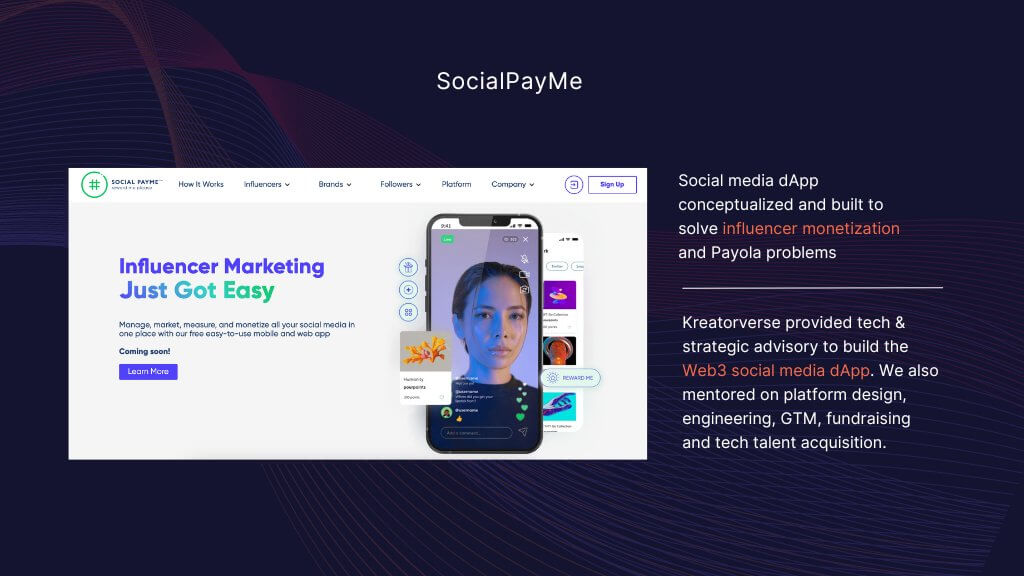
Innovative tokenomics can balance incentives for users, creators, and platform sustainability. Think of it as the gig economy, but more equitable and transparent. Brave Browser uses BAT tokens to reward users for viewing ads, demonstrating a new model of user incentives and monetization in Web3.
Fragmentation
The Web3 world is like a messy room—there’s just too much going on. Different platforms, different tokens, different everything. It’s overwhelming.
Efforts to unify the ecosystem through partnerships and interoperability solutions are underway but need more work. These will help make decentralized social media easier for users to navigate.
Environmental Impact
Bitcoin mining’s energy consumption has been compared to that of entire countries. Web3 platforms need to address the environmental footprint of their operations.
Moving towards more energy-efficient consensus mechanisms like proof-of-stake and investing in green blockchain technologies should be on every dApp developer’s priority list.
Addressing these challenges head-on is crucial for the growth and success of Web3 social media platforms. By tackling these issues with innovative solutions, Web3 can truly disrupt how we interact online—making it more secure, user-centric, and environmentally friendly.
The way forward for Web3 Social Media
If the numbers shared previously are to be believed, the future of Web3 social media is bright. More people will flock to platforms where they actually own their data and get rewarded for their contributions. As users become more aware of data privacy and the benefits of owning their digital identities, we’re expecting a significant uptick in social media adoption. Platforms like Steemit and Minds are already seeing increased user engagement, setting the stage for broader acceptance.
Brands like Curd Network, SocialPayMe and Bunpun are already disrupting the social media ecosystem with their unique offerings, leveraging blockchain technology and web3 tools to empower creators and users. These web3 platforms partnered with an experienced Web3 venture studio to successfully launch their offerings.
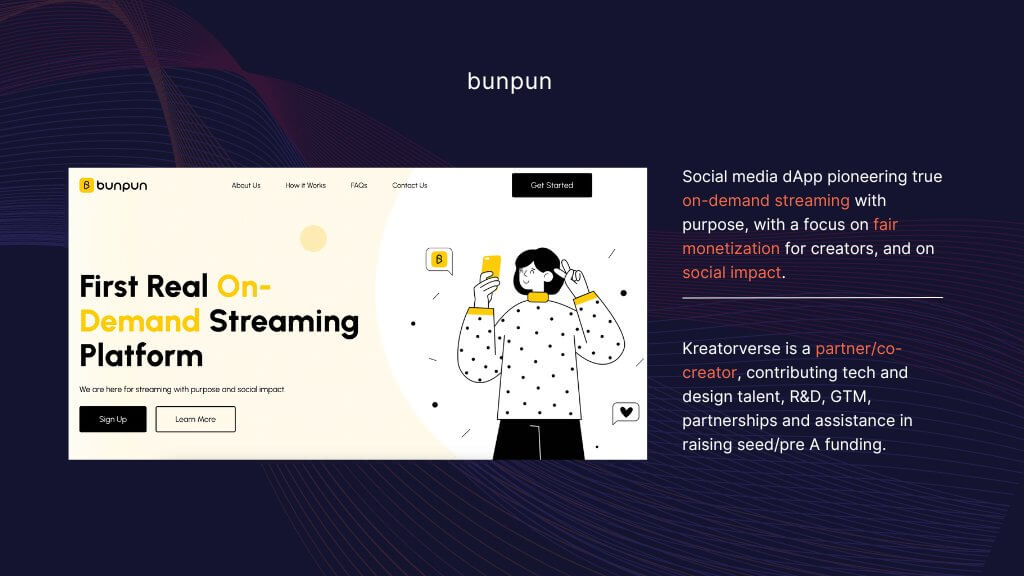
DeFi (Decentralized Finance) is already disrupting social media as we know it. Imagine earning interest on the tokens you receive for your posts or using your social media tokens as collateral for loans. Enhanced DeFi integrations will make these platforms more attractive and functional, opening up new possibilities for users to engage and benefit financially.
New technological advancements will also play a crucial role. Keep an eye out for innovations in blockchain technology that will make these platforms even more efficient and user-friendly. Advances in layer-2 solutions and cross-chain interoperability are just the beginning. These technologies will ensure that Web3 social media platforms can handle high volumes of transactions smoothly and affordably.
Emerging technologies are the secret sauce that will take social media from good to mind-blowing. AI can enhance user experience through personalized content and improved moderation. Think smarter algorithms that suggest content you actually want to see, without compromising your privacy. IoT (Internet of Things) can integrate with Web3 to create a more interconnected digital ecosystem. Other innovations, like VR (Virtual Reality) and AR (Augmented Reality), can create more immersive social media experiences, making interactions feel more real and engaging.
Are you ready to join the Web3-powered Revolution?
By embracing decentralized social platforms, we move towards a more secure, transparent, and user-centric digital world. The potential benefits are immense, from protecting our data to empowering creators and building trust in our digital interactions. This gives users control over their data and digital identities, enhances privacy measures, and provides secure data transactions. It also offers fair and direct monetization opportunities for creators, and platforms driven by community decisions ensure transparency and fairness.
Have a social dApp idea? Or a product that needs to step into its next iteration to empower users with the benefits of decentralization and democratization of the internet? Then you need a partner who knows the ins and outs of blockchain technology, has the design and development skills to deploy your vision, and provides GTM expertise. Most importantly, they are unshakeable in their belief that –
The future is social. The future is decentralized.

